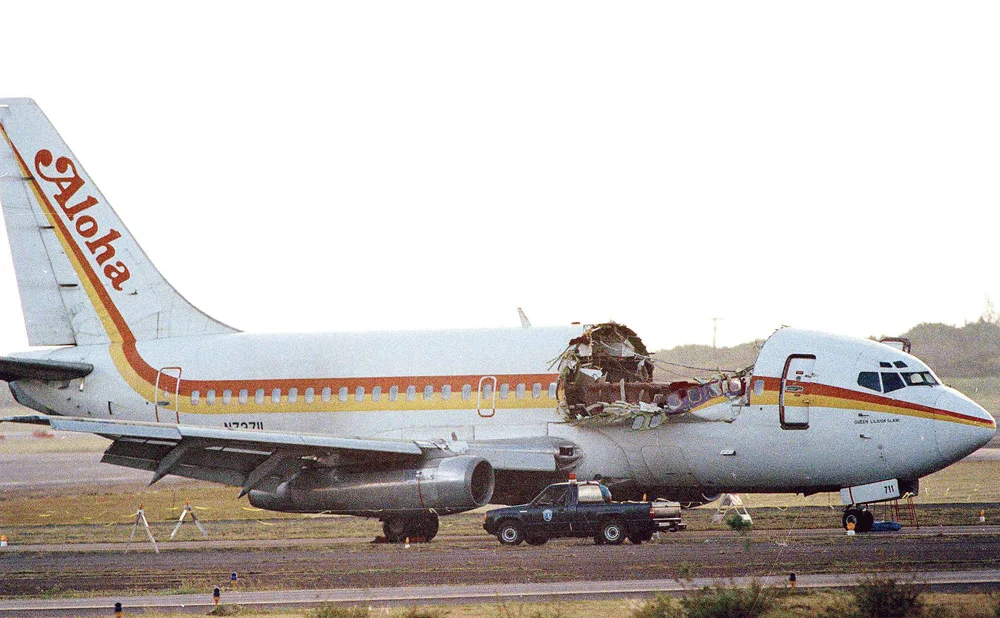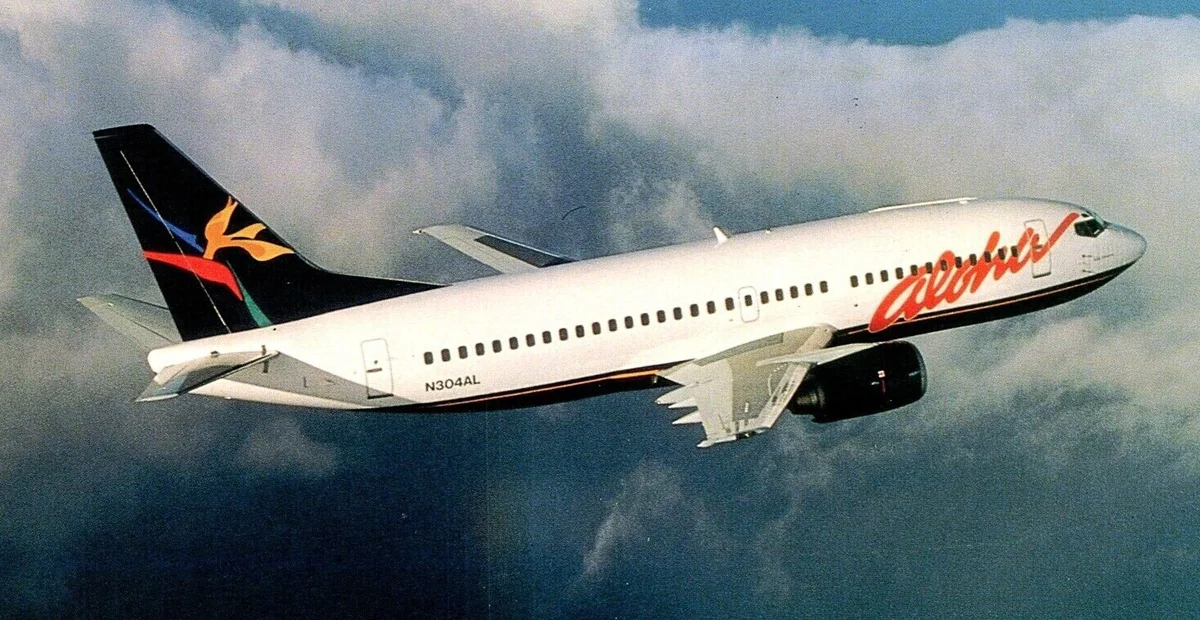For over six decades, the vibrant plumeria logo of Aloha Airlines was a cherished symbol of Hawaii. It wasn’t just an airline; it was an embodiment of the “Spirit of Aloha,” connecting the islands, serving as a vital link for residents, and warmly welcoming visitors to paradise. From its pioneering days as a post-war transport service to its eventual, heartbreaking collapse, Aloha Airlines’ story is deeply woven into the fabric of Hawaiian history, representing a beloved institution that navigated immense challenges in one of the world’s most unique aviation markets, and a significant safety incident that marked a pivotal moment in aviation history.
The Genesis: Post-War Island Hopping
The origins of Aloha Airlines date back to July 26, 1946, when it was founded as Trans-Pacific Airlines. In the immediate aftermath of World War II, there was a desperate need for reliable air transport between the Hawaiian Islands. While Hawaiian Airlines (then Hawaiian Air Lines) was already established, Trans-Pacific emerged as a competitor, offering more affordable inter-island travel.
Its initial fleet consisted of surplus military aircraft, primarily Douglas C-47s (the military version of the DC-3). These rugged and versatile propeller planes were perfectly suited for the short hops between the islands, landing on rudimentary airstrips. The airline quickly gained a reputation for its accessible fares and friendly service, appealing to local residents for whom air travel was a burgeoning necessity.
In 1958, as Hawaii transitioned towards statehood and a new era of tourism, Trans-Pacific Airlines rebranded itself as Aloha Airlines. This name change perfectly captured the essence of the islands and positioned the airline as a warm, welcoming gateway to the Hawaiian experience. The airline adopted a distinctive livery featuring the plumeria flower, a symbol of beauty and welcome in Hawaiian culture.
Throughout the 1960s and 1970s, Aloha Airlines solidified its position as a dominant inter-island carrier. It continuously upgraded its fleet, introducing more modern turboprops like the Fairchild F-27 and, crucially, its first jets. In 1966, Aloha became the first Hawaiian carrier to operate jet aircraft on inter-island routes with the introduction of the BAC One-Eleven. These faster, more comfortable jets revolutionized inter-island travel, making daily commutes and island-hopping vacations significantly more efficient.
Expansion, Competition, and the Aloha Spirit
The 1980s and 1990s were marked by intense competition within the Hawaiian inter-island market. Aloha Airlines found itself in a fierce rivalry with Hawaiian Airlines, often dubbed the “Inter-island War,” as both carriers vied for market share and passenger loyalty. This period saw aggressive pricing, frequent schedule changes, and constant innovation in an attempt to outmaneuver each other.
Despite the intense competition, Aloha Airlines continued to emphasize its unique “Spirit of Aloha.” Its flight attendants were renowned for their genuine warmth and hospitality, often greeting passengers with a friendly “Aloha” and a fresh flower lei. The airline became more than just a means of transport; it was an integral part of the Hawaiian vacation experience.
A significant expansion came in the mid-1980s when Aloha Airlines ventured beyond its inter-island stronghold. It launched its first routes to the U.S. mainland, starting with direct flights from Honolulu to Oakland (OAK) and later to Los Angeles (LAX). For these longer trans-Pacific routes, Aloha acquired wide-body aircraft like the Boeing 747 (albeit briefly and mostly for charters) and then consistently operated the Boeing 737-300 and 737-400, utilizing these medium-range jets for its mainland connections.
This expansion aimed to diversify its revenue streams and reduce its sole reliance on the highly competitive inter-island market. It allowed Aloha to capture a segment of the direct mainland-Hawaii tourist market, further solidifying its presence.
Aloha Airlines Flight 243: A Defining Moment
On April 28, 1988, Aloha Airlines experienced a truly unprecedented and terrifying incident that forever changed aviation safety. Aloha Airlines Flight 243, a Boeing 737-200 (registration N73711) operating a scheduled inter-island flight from Hilo to Honolulu, suffered a catastrophic in-flight structural failure.

As the aircraft reached its cruising altitude of 24,000 feet, a large section of the fuselage roof, about 18 feet long, ripped off just behind the cockpit. This caused rapid decompression and exposed the cabin to the open air. Incredibly, despite the immense damage and the terrifying loss of a flight attendant who was swept out of the aircraft, the pilots, Captain Robert Schornstheimer and First Officer Mimi Tompkins, managed to execute an emergency descent and make a successful emergency landing at Kahului Airport (OGG) on Maui.
The incident was a stark and terrifying reminder of the dangers of metal fatigue and the importance of aging aircraft maintenance. The National Transportation Safety Board (NTSB) investigation concluded that the primary cause was metal fatigue due to corrosion and inadequate maintenance leading to disbonding of lap joints on the fuselage. The aircraft had accumulated an exceptionally high number of short take-off and landing cycles, common for inter-island flights, which subjected the fuselage to repeated stress.
Flight 243 led to significant changes in aviation safety regulations worldwide. It prompted widespread inspections of older aircraft, particularly those with a high number of flight cycles, and led to enhanced maintenance procedures, improved inspection techniques (like eddy current inspections), and greater emphasis on structural integrity of aging aircraft. It also highlighted the critical importance of crew resource management (CRM) and the resilience of flight crews in extreme emergencies. The bravery of the flight crew in landing the severely damaged aircraft is still studied today.
Despite the horrific nature of the incident, the fact that 64 out of 65 passengers and crew survived was a testament to the crew’s skill and the inherent robustness of the aircraft’s design, even under such extreme circumstances. However, the event undoubtedly cast a shadow on the airline’s operations and added to the challenges it faced in the subsequent years.
Main Hubs: The Island Connections
Aloha Airlines’ operations were inherently decentralized due to the nature of inter-island travel, but it maintained primary operational bases at two key airports:
- Honolulu International Airport (HNL), Oahu: This was Aloha’s largest and most crucial hub. As the main international gateway to Hawaii, HNL served as the central connecting point for all of Aloha’s inter-island flights and its mainland U.S. routes. Its headquarters and main maintenance facilities were also located here.
- Kahului Airport (OGG), Maui: Maui is a major tourist destination, and OGG served as a significant secondary hub for Aloha’s inter-island operations. It facilitated direct flights to and from other islands, often bypassing Honolulu for greater efficiency for travelers focused on Maui.
Other significant operational points included Lihue Airport (LIH) on Kauai and Kona International Airport (KOA) on the Big Island, serving as crucial links in its comprehensive inter-island network.
The Fleet: From Propellers to Jets
Aloha Airlines operated a consistent and evolving fleet over its lifetime, adapting to technological advancements and operational demands.
Early Fleet (1940s-1960s – Trans-Pacific/Aloha):
- Douglas C-47 (DC-3): The initial workhorse for inter-island routes.
- Fairchild F-27: Turboprop, replacing the DC-3s.
- BAC One-Eleven: Aloha became the first Hawaiian carrier to introduce jets for inter-island service in 1966, revolutionizing travel times.
Later Fleet (1980s-2000s):
- Boeing 737-200: This became the staple of Aloha’s inter-island and initial mainland fleet. Known for its ruggedness and ability to operate from shorter runways, the 737-200 was perfectly suited for Hawaiian operations. Flight 243 involved one of these aircraft.
- Boeing 737-300/-400/-700: As Aloha expanded its mainland operations and modernized its fleet, it introduced newer variants of the 737 Next Generation family. The 737-700s were some of the last aircraft operated by Aloha on its mainland routes, offering better fuel efficiency and range.
Fleet Stats (circa 2000s, pre-closure):
- Total Aircraft: Approximately 10-15 aircraft (primarily 737s)
- Boeing 737-200: Significant portion for inter-island.
- Boeing 737-700: For mainland routes.
Route Information: Connecting the Hawaiian Islands and Beyond
Aloha Airlines’ route network was primarily focused on inter-island travel, with a strategic expansion to the U.S. West Coast.
Inter-island Routes:
These were the heart of Aloha’s operations, providing frequent, high-capacity connections between:
- Honolulu (Oahu)
- Kahului (Maui)
- Lihue (Kauai)
- Kona (Big Island)
- Hilo (Big Island)
- Molokai, Lanai (less frequent or via codeshare/smaller aircraft)
The competition on these routes was fierce, with Aloha operating hundreds of flights weekly, making island-hopping highly accessible for both residents and tourists.
U.S. Mainland Routes:
Aloha’s trans-Pacific routes were crucial for its broader financial health:
- Oakland (OAK), California
- Los Angeles (LAX), California
- Las Vegas (LAS), Nevada
- Orange County (SNA), California
- Sacramento (SMF), California
- San Diego (SAN), California
- Phoenix (PHX), Arizona
- Vancouver (YVR), Canada (international)
These routes directly targeted the West Coast tourist market and the large Hawaiian diaspora on the mainland.
The Final Descent: Economic Pressures and Collapse
Despite its iconic status and beloved service, and its valiant efforts to maintain safety following the Flight 243 incident, Aloha Airlines faced relentless financial pressures throughout the 2000s, leading to its eventual demise. A perfect storm of factors contributed to its downfall:
- Intense Competition: The entry of aggressive low-cost carriers (LCCs) like ATA Airlines (which expanded significantly into Hawaii in the early 2000s) on the mainland-Hawaii routes drove fares down dramatically. This made it difficult for Aloha, with its older fleet and higher cost structure, to compete.
- Fuel Price Spikes: Skyrocketing fuel prices in the mid-2000s were a devastating blow. As an airline operating long over-water flights, fuel was a massive portion of its operating costs, and hedging strategies were often insufficient.
- 9/11 Impact: The aftermath of the September 11, 2001, terrorist attacks severely impacted air travel, particularly leisure and international travel, causing a significant downturn in tourism to Hawaii.
- Labor Costs: Legacy labor agreements and a unionized workforce, while important for employees, often meant higher operating costs compared to non-unionized LCCs.
- Bankruptcies and Restructuring Attempts: Aloha filed for Chapter 11 bankruptcy protection twice, first in 2004 and again in 2008. Numerous attempts were made to restructure debt, reduce costs, and find new investors.
Ultimately, these efforts were insufficient to stem the tide of losses. On March 31, 2008, after 61 years of operation, Aloha Airlines ceased all scheduled passenger flights. The final flight, a Boeing 737-700, landed in Honolulu from Burbank, California, marking a truly heartbreaking end for an airline that was so much more than just a business to the people of Hawaii.
The cargo division, Aloha Air Cargo, survived and continues to operate today, but the passenger airline, the “Spirit of Aloha,” was gone.
Legacy and Remembrance
The closure of Aloha Airlines was a profound loss for Hawaii. It was a local institution, a source of pride, and a critical employer. Its demise led to a temporary reduction in inter-island capacity and a shift in the competitive landscape, with Hawaiian Airlines becoming the dominant inter-island player. The lessons learned from Flight 243, however, live on, shaping global aviation safety standards.
Aloha Airlines will always be remembered for:
- The “Spirit of Aloha”: Its unparalleled customer service and genuine warmth that made every flight a part of the Hawaiian experience.
- Pioneering Inter-island Travel: Its foundational role in connecting the islands and making air travel accessible to locals.
- Its Iconic Brand: The plumeria logo and the distinctive livery that symbolized Hawaii in the skies.
- Aviation Safety Catalyst: Flight 243’s profound impact on aircraft maintenance and structural integrity standards, making skies safer for everyone.
- Valiant Efforts: Its repeated attempts to overcome overwhelming financial odds through restructuring and innovation.
Though its planes no longer grace the Hawaiian skies, the memory of Aloha Airlines, the plumeria-tailed aircraft carrying the spirit of aloha, remains a cherished part of the islands’ history and a testament to the challenges and triumphs of airline operations in one of the world’s most unique and beautiful destinations.
Keyword: DeadAirlines

